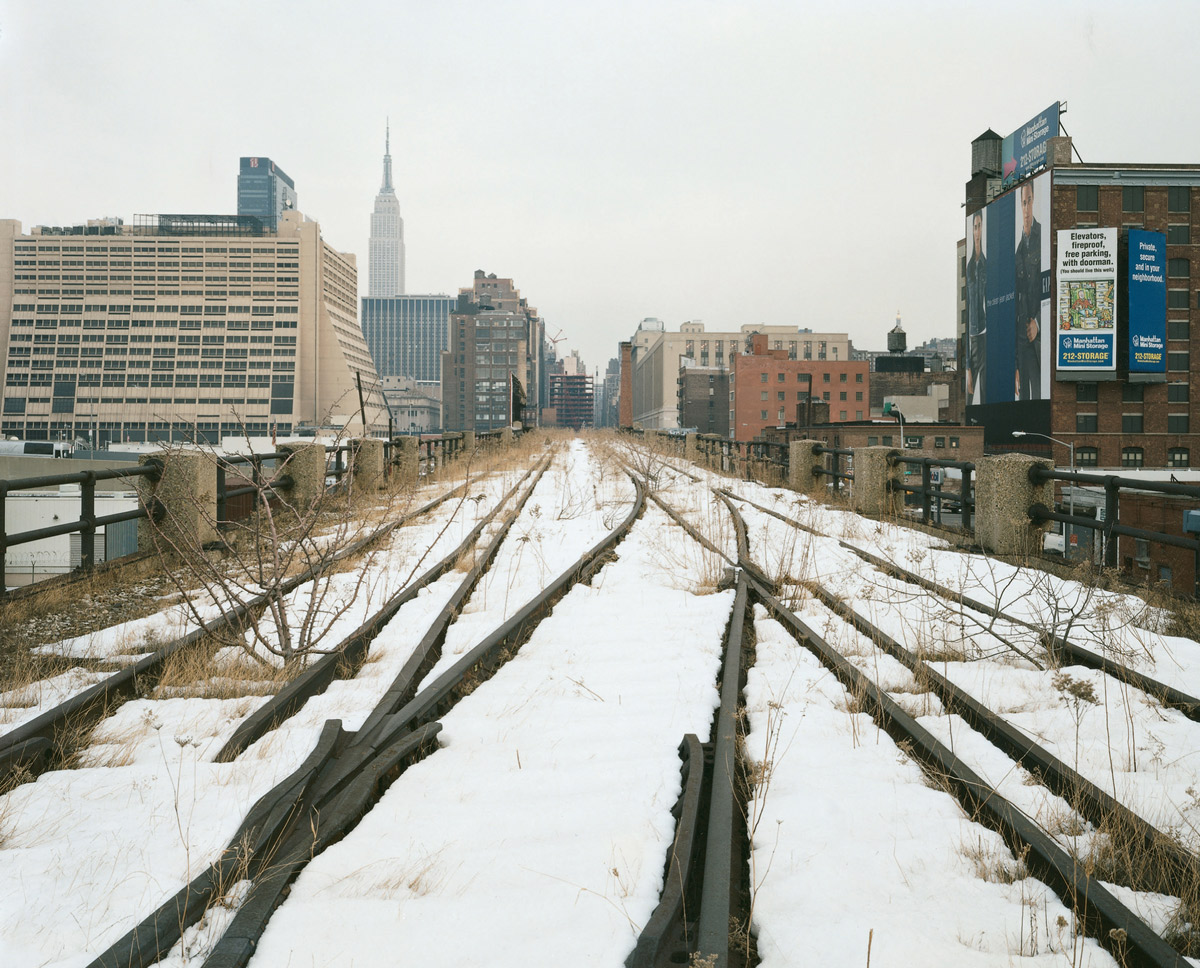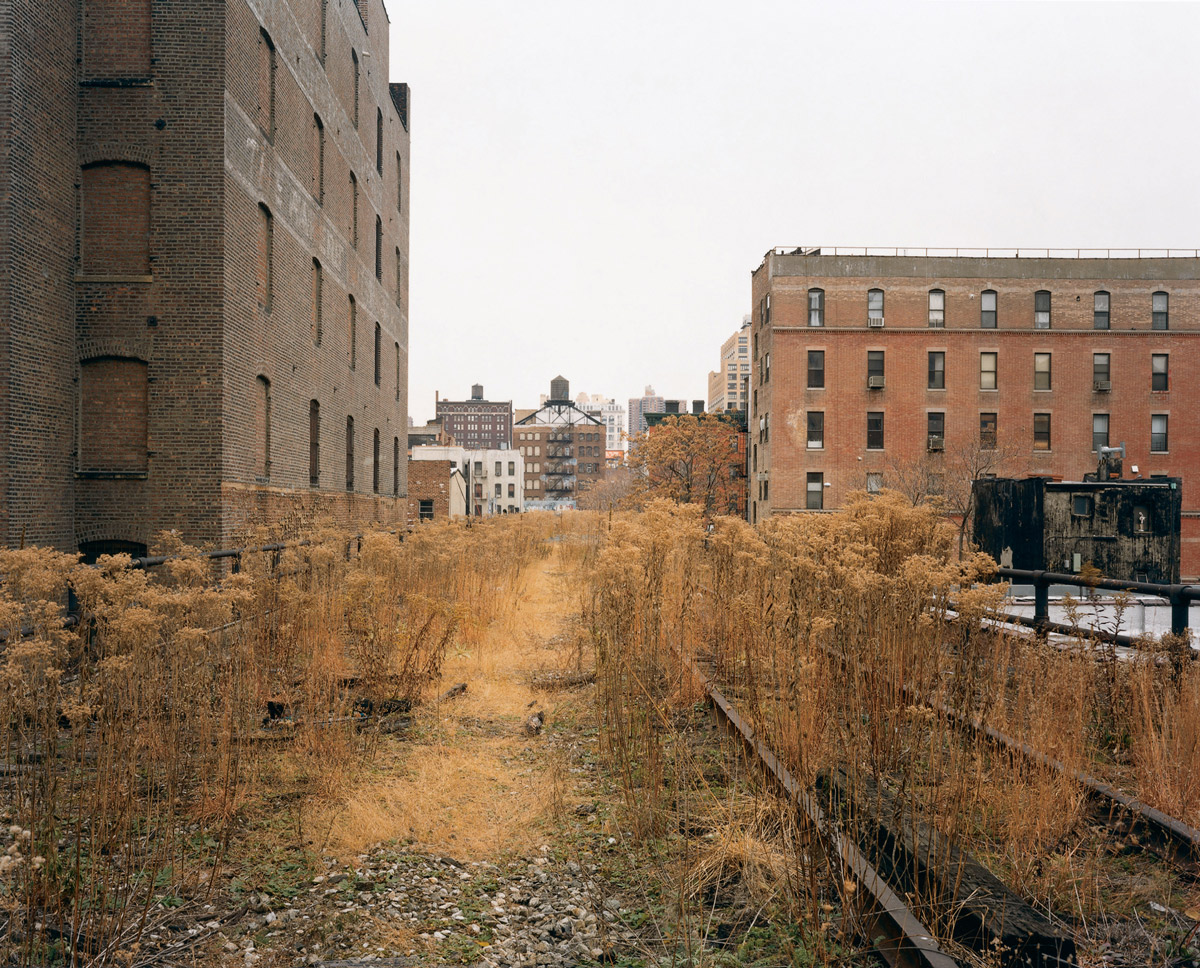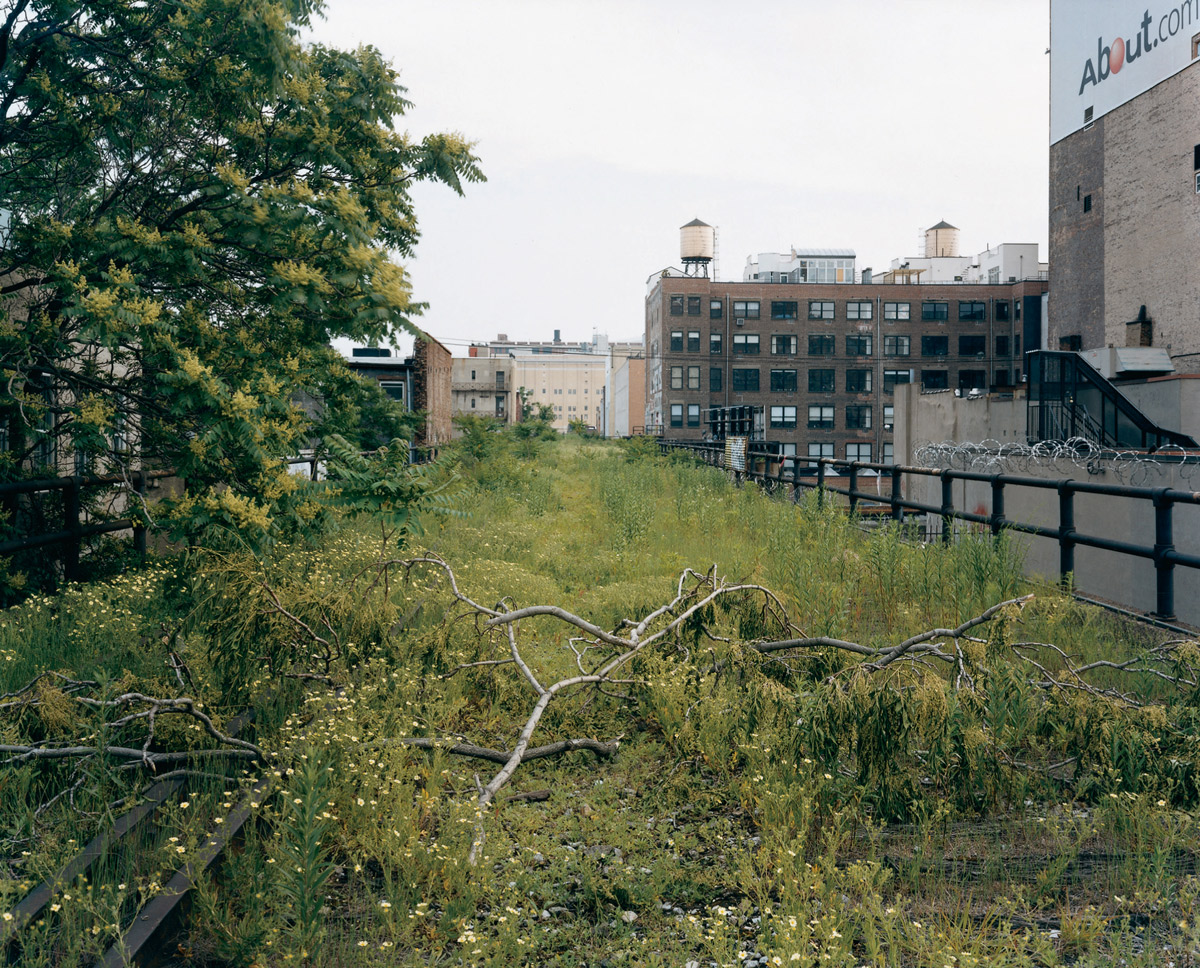Artist Project / The High Line
Tracking New York’s mercantile past
Joel Sternfeld
In the early decades of the twentieth century, large sections of the West Side of Manhattan were taken up by piers for passenger and cargo ships. The cargo would be placed on trains that ran along tracks on 10th Avenue and then transported directly to other parts of the country. As the population of Manhattan increased, however, and the West Side became more crowded, the trains would often run over pedestrians and horse carts, a situation that finally earned 10th Avenue the nickname “Death Avenue.”
In the 1920s, a solution was proposed that was finally implemented in 1934. The railroad was to run on elevated tracks from the West Village to 34th Street, at which point it joined up with the central New York rail system. The resulting High Line was in use until 1980. Legend has it that the last train to run on the tracks took three carloads of frozen turkeys.
After falling into disuse, the High Line continued its suspended existence over Manhattan and a strange terrain began to take shape. Over the years, the trains’ wheels had brought seeds of wildflowers from other parts of the country and these flowers and plants thrived there to create a hybrid landscape. People soon found their way onto the High Line to carry out extralegal activities; signs of the paths carved by these visitors are still visible in places. Other uses for the space have been quite inventive: One man currently living in a building adjoining the High Line can walk over to it by placing a plank between his bedroom and the edge of the structure. He keeps his Christmas tree, lit by a long extension cord, on the tracks.
That the High Line has survived all the various real estate machinations of New York is surprising in a city so willing to erase historical artifacts that might impede real estate development. And in fact the High Line is no longer able to hide in the light of the Hudson River. A group of developers who own property in these desirable parts of Manhattan are now petitioning the city to remove the elevated structure. In response, a group called the Friends of the Park is mounting a campaign to stop the railroad from being dismantled, suggesting instead that a park be built on it.
The photographs by Joel Sternfeld, a member of the Friends of the Park, are part of a series taken from various places on the High Line. Like some of his earlier photographs of the countryside around Rome and of Hunt Island (where the homeless of New York City are buried), these images are concerned with what Sternfeld calls a degraded landscape. Its beauty is in part generated by the marks left on it from the fractured social history of its surroundings, here the long history of New York as a point of departure and arrival for goods and people. For Sternfeld, the marginal status of the High Line makes that history more present and palpable than if we tried to read it through the city’s central artifacts. In this model, urban history functions like an anamorphic drawing: It is only legible if looked at awry, from the periphery.
—Sina Najafi


Joel Sternfeld is an artist who lives in New York City. A retrospective of his portrait work, “Stranger Passing,” opens in July 2001 at SFMOMA. His books include American Prospects, Campagna Romana, On This Site, Hart Island, and Stranger Passing.
Sina Najafi is editor-in-chief of Cabinet.
Spotted an error? Email us at corrections at cabinetmagazine dot org.
If you’ve enjoyed the free articles that we offer on our site, please consider subscribing to our nonprofit magazine. You get twelve online issues and unlimited access to all our archives.